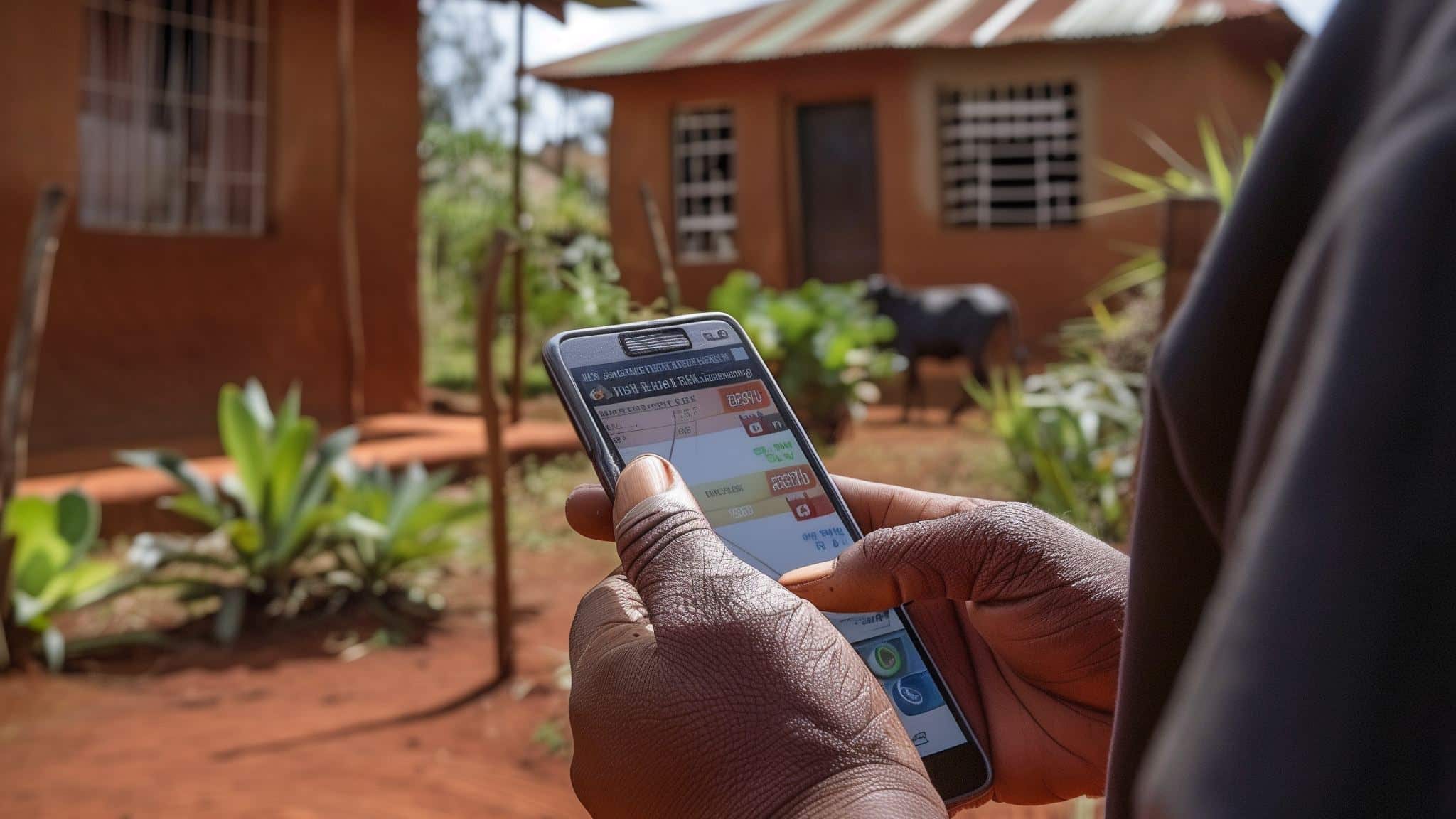Today’s guest blog was contributed by Oladimeji Shotunde from the Global Prosperity group.
In February 2023, Nigeria’s Central Bank launched a portal for nationwide validation and deposition of old notes in exchange for new notes. However, this demand-side intervention was short-lived. Nigerians who were most vulnerable to the effect of demonetisation lived in rural areas with no banking services; they lacked digital skills and were exposed to technological risks. Due to these challenges, and others (including political), the initiative was discontinued as of 28 November 2023. This raises an important question: What happens to people who wanted to act on the directive but are constrained by a lack of infrastructure, internet, electricity, a functional device, or the ability to access or comprehend digital information?
More than 350 million African adults are unbanked and rely solely on cash transactions. As of 2020, average market penetration levels for fintech services (excluding South Africa) were 3-5%, indicating a coverage gap of about 95%. How might fintech players achieve greater inclusivity? Today, many startups are digitizing (fintech-ing) their operating models for an array of reasons: to attract investors, optimize their high-volume-low-margin business model, and advance the now-popular mantra of financial inclusion. Unfortunately, these models often exclude nonconsumers who are not digitally savvy–the very people mostly in need of the services.
Round Solution, Square Context
In Africa, a large number of nonconsumers lack access to various products and services because existing ones are complicated, expensive, and inaccessible. Startups and actors in many growth economies commonly force solutions into the market. The push vs. pull strategy explains this in detail.
Undoubtedly, a fintech-first strategy by startups presents benefits, including enhanced financial inclusion, cost reduction, and market expansion. However, this approach also faces several challenges. Low digital literacy rates, lack of trust, heightened cybersecurity concerns, and infrastructure and connectivity issues are significant obstacles for nonconsumers and startups. Although these startups are well-intentioned, some fail because they “push” what seem to be the “right solutions”—most of which have a track record of working well in prosperous countries—into low- and middle-income countries. In this case, startups force-fit (push) technologically advanced solutions into their operating models, to facilitate payments, without giving deep thought to how they impact those to whom they are being pushed.
Despite global trends in technology and digitization, using cash remains popular across Africa. Consider the analogy. There is no point in installing better pipes, automatic faucets, and more showers IF you’re not getting water into the house. Similarly, there is little point in complicating payments, integrating new payment methods, and phasing out others if, ultimately, they exclude a section of the target market from accessing products/services. A ‘Your Voice 2024 Report’ from the Bank of England confirmed that continued access to cash and its utilization as a payment option in stores and for transactions is important to the British public. In fact, cash is the second most frequently used method of payment in the UK. One would expect cash usage to decline with the rise of contactless payments, digital banking, and Britain’s advanced economy status. But the public thinks otherwise. So, taking a step backwards to imagine the case for growth economies gives all the cues that can be taken.
How can Startups Embed True Inclusion in their Offerings?
Customers often ask: “How can you make accessing and paying for your services or products easy without complicating things?”
It is ironic that startups pitch about financial inclusion in pitch books; yet, in reality, witness a vast number being structurally excluded. The onus rests on startups to refine and iterate their operating models to achieve true inclusion. Mobile penetration in Sub-Saharan Africa is projected to reach 50% by 2030, implying that more than 50% of the population does not own a mobile device. Nonconsumers want to benefit from the array of products and services offered by these startups, but find that they require some financial education, access to devices, or exposure to technology. Startups should take cues from MPESA’s success in Kenya and MTN’s MoMo in Ghana by prioritizing the immediate market’s needs and realities.
The push vs. pull strategy gives some perspectives. While push involves forcing a solution into the market without considering the context, pull strategies are deployed by innovators to respond to the struggles of everyday consumers or a specific market. Pull strategies can transform existing nonconsumers into consumers. So, for African startups to optimize their operating models, together with hybridity, they can look to deploy some context-specific solutions.
For example, one suggestion is the adoption of Mastercard’s nascent solution that uses smart card technology layered with biometrics and doesn’t require a bank account. Users can top up at local agents and are trained to recognize that failed biometric validation means the payment didn’t go through. This is akin to cash, requiring no phone, and offers additional benefits. Similar to “PVC cards” used by voters in many rural areas, key routines are memorized for use. Startups would need to create a model that includes the distribution of these cards to as many customers as possible.
Cash payments are also sometimes complemented with online payments. Some of the fintech-ing solutions, save for USSD, are unusable without reliable internet infrastructure and a customer’s digital savvy. As such, startups, and broadly, the ecosystem should consider priority investment in fintech education and digital infrastructure development. That way, it would be easier for nonconsumers to pull these solutions into their lives. Another solution pending market maturity is agency banking. Startups could partner with traditional banks, accessible to nonconsumers. The banks would handle cash transactions and remit funds to these startups.
Ultimately, there is no one-size-fits-all strategy. Many startups have mastered the art of developing good value propositions, but complicating solutions with strategies that outpace market and operational realities could lead to slower adoption rates for their products and services.


